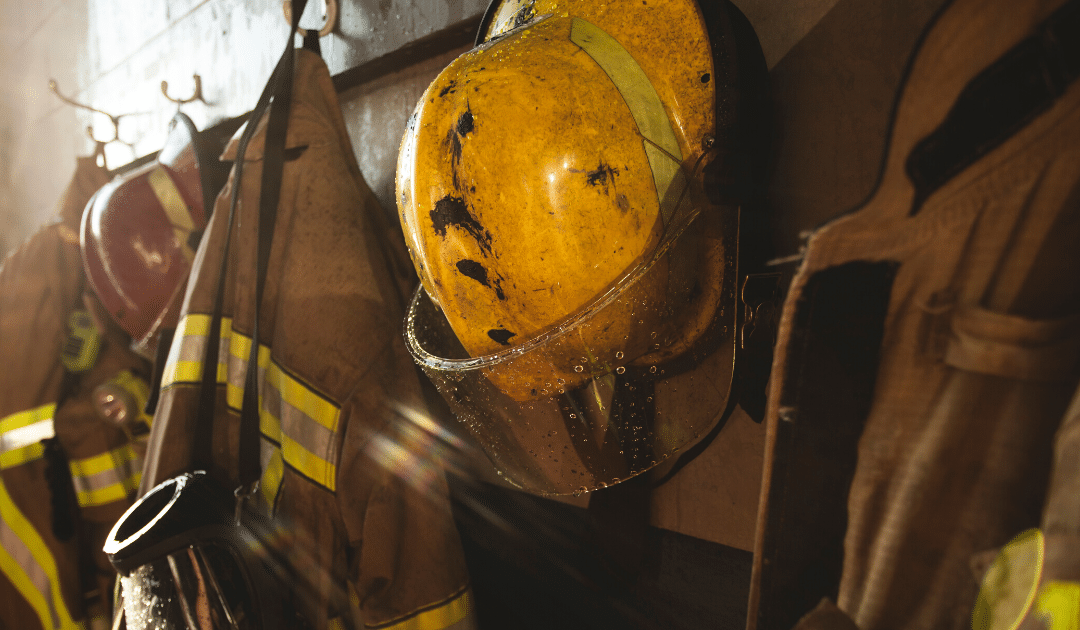Summer heat is tough for anyone, but firefighters, peace officers, EMTs, and paramedics are at increased risk when heat’s extreme.
First responders are outdoors for extended periods of time, often in the sun. They’re also usually wearing heavy gear such as firefighting equipment, bulletproof vests (for officers), or other bulky protective equipment.
When these factors combine with elevated temperatures, heat stress can set in quickly. So it’s important for first responders and their departments to be well-versed in both the symptoms and best measures for prevention.
Heat-Related Illnesses: A Slippery Slope
Heat stress can progress from mild to life-threatening when symptoms aren’t addressed. Here are the main stages:
- Heat Cramps or Rashes – Caused by increased sweating, cramps, and rashes are the first sign of stress.
- Heat Exhaustion – At this stage, the body is overheating as a result of excessive loss of water and salt.
- Heatstroke – The most serious heat-related illness, heat stroke happens when the sweating mechanism breaks down and is no longer able to cool the body. Heatstroke can be fatal and requires immediate medical attention.
Signs of heat stress aren’t always obvious — brush up on the symptoms of the above conditions here.
Prevention
Preventive measures can be taken by first responders themselves, as well as their crew members, supervisors, and departments. The most successful heat safety protocols are adopted department-wide and include elements such as:
- Hydration – Staying hydrated is the most important tactic for preventing heat illness. Although first responders know the importance of hydration, it can easily be forgotten in the middle of emergency situations. Water should be made accessible at all times to first responder crews, with the encouragement to hydrate well and often.
- Knowing the signs – It’s important that both supervisors and team members know the signs of heat stress, both to self-monitor and to look out for their colleagues. Implementing a buddy system where partner pairs observe each other for signs of heat stress is also a good idea.
- Rest breaks – Rest periods are essential to ensure that workers can hydrate and cool down. They should occur more frequently when temperatures, humidity, or sunshine increases, when air is stagnant, during especially taxing work, and when workers are wearing protective clothing or gear.
- Cooling station – Especially when emergency calls are extended, a temporary set up where responders can retreat and take a rest is important. For instance, some fire stations supply their crews with trailers with a large fan and a mister; some have air-conditioned “rehab trucks” for firefighters on extended calls.
- Training – Before the hot weather begins, employers should provide heat stress training to all workers and supervisors so they’re better prepared. When possible, training should cover conditions specific to that work site or area.
- Heat alert program – When extreme heat is forecast, it’s important for employers and supervisors to implement a heat alert program, and ensure their workforce is safe and on the lookout.
- Acclimatization – First responders can become acclimatized to working in hot environments, gradually increasing their physical stamina and sweating proficiency. Acclimatization is achieved through evidence-based training programs provided by employers.
- Fitness — The risk of heat stress increases with obesity, high blood pressure, heart disease, lack of physical fitness, and certain medications. All the more reason for first responders to improve their diet and exercise where they can.
Finally, although not a factor in heat illness per se, extensive sun exposure over time increases skin cancer risk. A 2017 study in the Journal of the American Medical Association found that skin cancer risk in firefighters is greater than in the general population. Wearing (sweat-proof) sunscreen should be a daily habit.
This article is furnished by California Casualty, providing auto and home insurance to educators, law enforcement officers, firefighters, and nurses. Get a quote at 1.866.704.8614 or www.calcas.com.
- Graduation – When to Remove Your Child from Your Auto Policy - May 18, 2023
- How to Prevent Catalytic Converter Theft - May 17, 2023
- How Much Does Home Insurance Cost? - May 17, 2023

